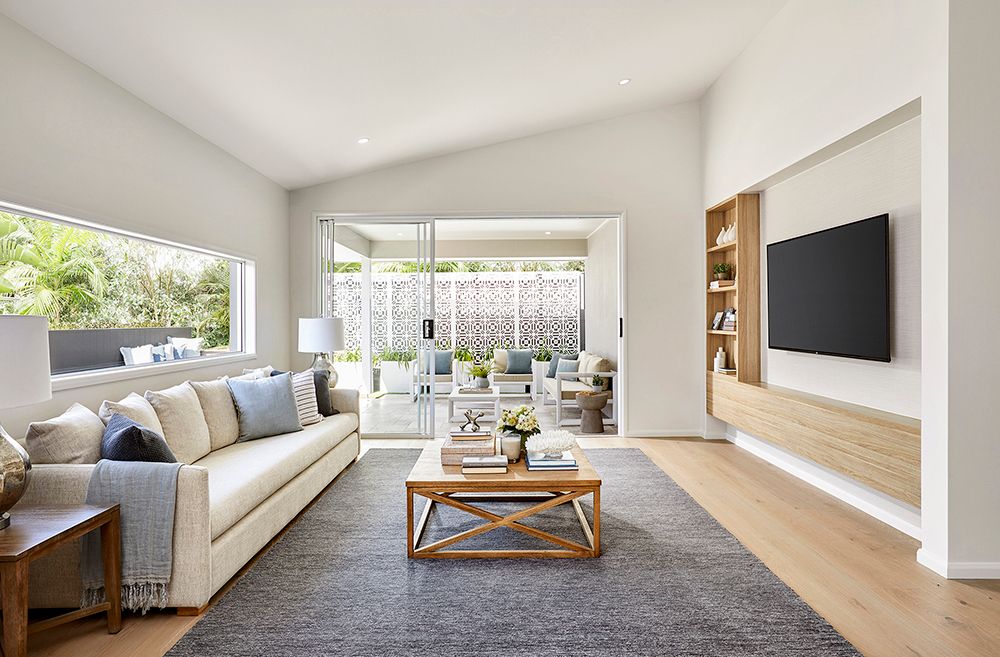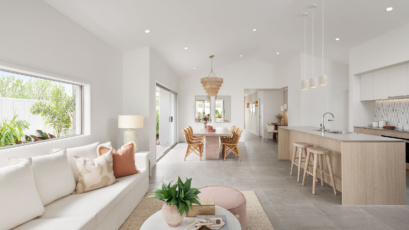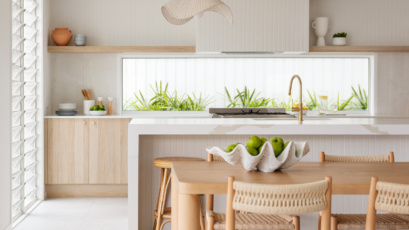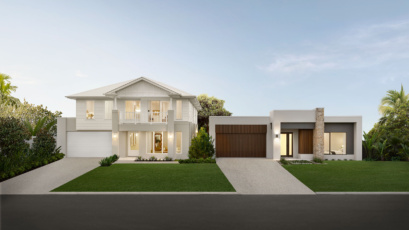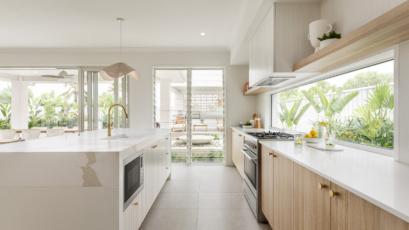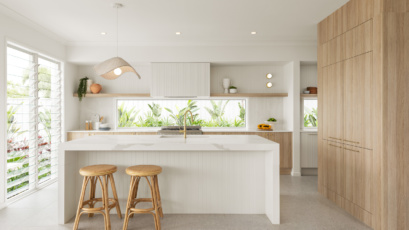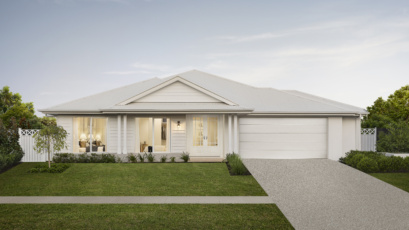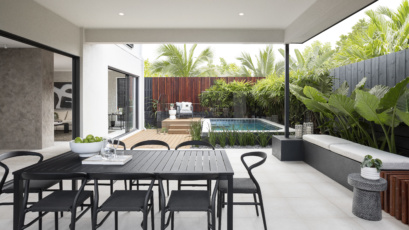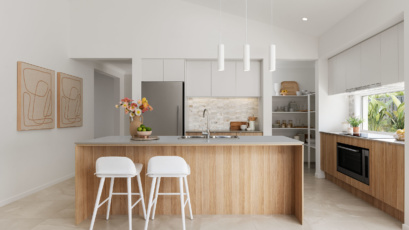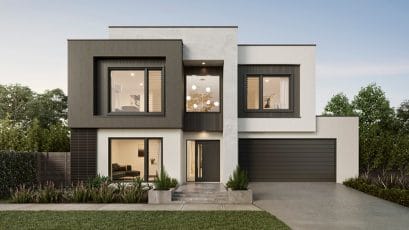Building a home involves lots of attention to detail. Every component, from the foundations to the ceiling, matters. Especially the standard ceiling height in Australia. While we often talk about room sizes, layouts and façade styles, there’s an often overlooked aspect that plays a pivotal role in both the aesthetics and functionality of your home: the ceiling height.
What is the standard ceiling height in Australia?
When it comes to constructing or renovating homes, there are certain standards and regulations to adhere to, ensuring safety and consistency. One of these standards pertains to ceiling heights.
According to the National Code of Construction (NCC) guidelines, for most habitable rooms, with the exception of kitchens, a ceiling height of 2.4 metres is recommended. Kitchens, on the other hand, have a suggested height of 2.1 meters. This same 2.1 meter height extends to non-habitable rooms and spaces such as corridors, passageways, and other essential areas such as bathrooms, shower rooms, laundries, sanitary compartments, and even garages.
These standards, however, are not absolute. Depending on the design, architecture, and purpose of a room or space, variations can be made. For instance, many modern homes, especially those aiming for a more luxurious or spacious feel, might opt for ceiling heights of 2.5 metres.
At Coral Homes, we ensure all our home designs are compliant with the latest standards while also catering to the diverse needs and preferences of Australian families. Discover our range home inclusions, to learn more about our ceiling heights.
Types of ceilings: Beyond just height
The ceiling of a room isn’t just defined by its height. Its design and structure plays a pivotal role in determining the room’s ambience and functionality. Here’s a brief overview of the types of ceilings that can be incorporated into Australian homes:
Plain ceiling
The most common choice, this offers a flat and uninterrupted surface. It’s a timeless option that suits a variety of home styles, from the contemporary to the classic. Benefits of plain ceilings include:
- Versatility: Suits a variety of interior styles and décor.
- Cost-Effective: Typically easier and less expensive to construct and maintain.
- Space Enhancement: Can be painted in light colours to give a room a spacious feel.
Raked ceiling
Taking inspiration from sloping rooflines, a raked ceiling creates a sense of grandeur and spaciousness. It’s especially popular in homes that aim to merge indoor and outdoor living spaces, offering a seamless transition. Some people consider raked ceilings to be a must in their new homes. Benefits of raked ceilings include:
- Spacious Feel: The slope creates an increased sense of volume.
- Natural Light: Allows for more opportunities to introduce natural light through high windows or skylights.
- Architectural Interest: Adds a dynamic and contemporary feel to spaces.
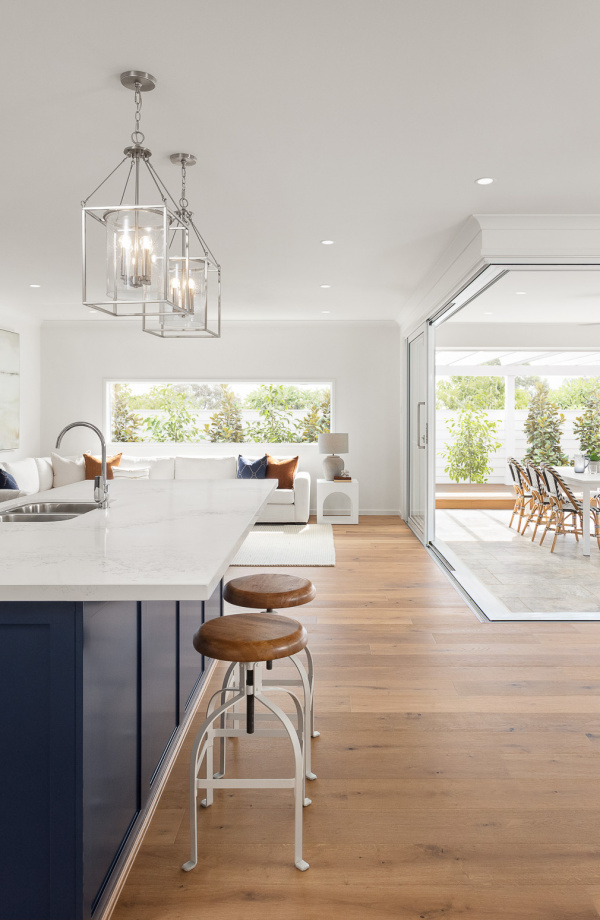
Things to consider when choosing your ceiling and its height
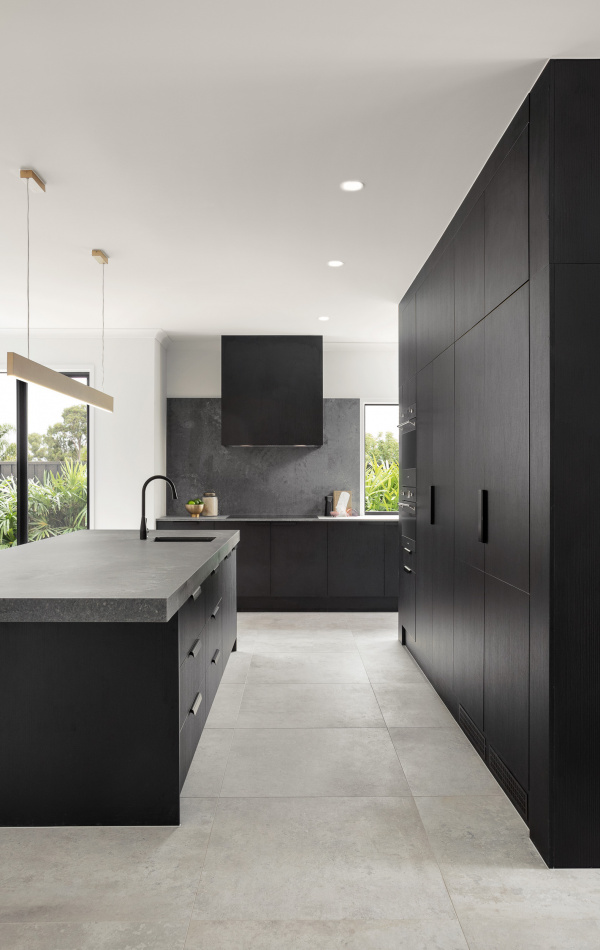
The rationale behind the standard ceiling height isn’t purely based on architectural aesthetics. There are several intrinsic benefits that homeowners can enjoy with these measurements:
Space perception
A ceiling at the standard height of 2.4 meters can make rooms feel adequately spacious without appearing cavernous or overwhelming. It strikes the perfect balance between comfort and spaciousness.
Energy efficiency
Ceilings at the standard height are more energy efficient, especially when it comes to heating and cooling. Rooms warm up or cool down faster, leading to potential savings on energy bills, something that resonates deeply with the eco-conscious Australian homeowner.
Consistency and aesthetic
Standard ceiling heights offer a uniform look across homes, ensuring rooms flow seamlessly into one another. This consistency can be comforting and is often preferred for its neat appearance.
Cost-effective
Standardised heights typically mean standardised costs. Building at the prescribed height can be more budget-friendly, thanks to the more simplistic construction processes.
Ceiling variations and popular trends
While the standard ceiling height serves a multitude of homes across Australia, design evolution and individual homeowner preferences have given rise to variations and trends:
Higher ceilings in living areas
A trend we’ve observed, and often incorporate at Coral Homes, is having higher ceilings in living and communal areas for a more open feel, while bedrooms retain the standard height for coziness.
Raked ceilings for modern designs
Modern Australian homes, especially those with a focus on blending indoor and outdoor spaces, are embracing raked ceilings to elevate the architectural drama of their spaces.
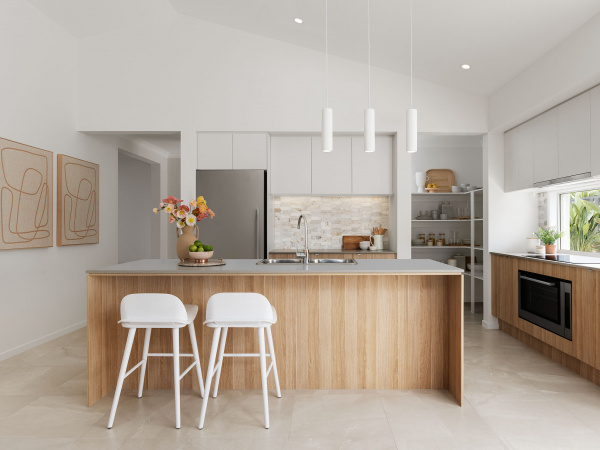
Regional differences in ceiling height
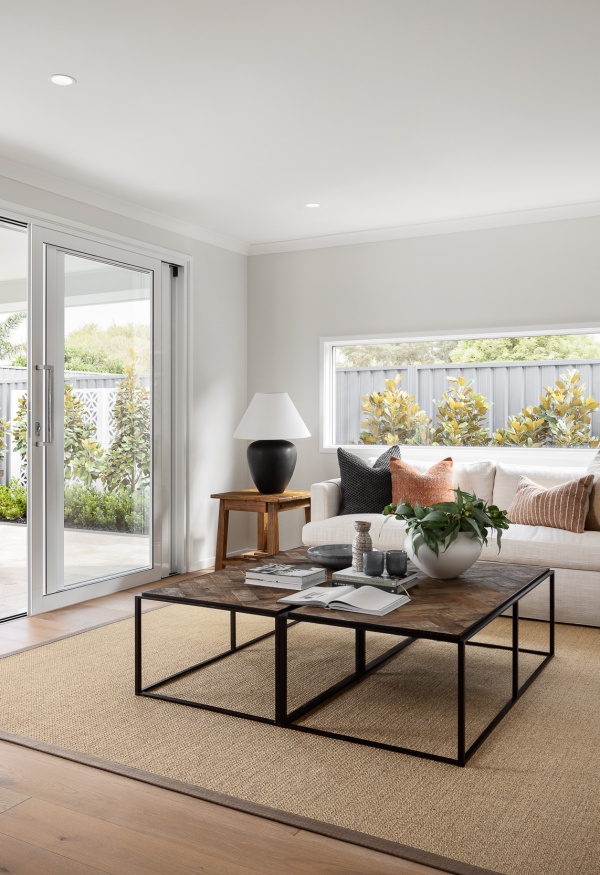
Australia is a vast country, with diverse climates, cultures and architectural traditions. While the National Construction Code (NCC) sets a general standard for ceiling heights, regional preferences and requirements can subtly influence home designs.
Coastal regions
In places like South East Queensland, where the climate is predominantly warm, homes often use higher ceilings. This design consideration allows for better air circulation, keeping the interiors cooler.
Acreage homes
Homeowners often seek designs that blend seamlessly with the expansive surroundings. This is why raked ceilings are a popular choice for acreage homes. They enhance the contemporary feel of the home. The sloping lines of raked ceilings augment the open-plan design characteristic of acreage homes, fostering a balanced inside-outside flow. This design elevates the home, making it more spacious, relaxed, and lit up with natural light, creating an ambience.
Inner-city residence
Inner-city living demands a balance between aesthetic appeal and space optimisation. With space being important, homeowners often lean towards ceiling types and heights that amplify the perception of the space. Here, higher ceilings and innovative designs like coffered and tray ceilings are prominent.
Standard ceiling height or not, Coral Homes can help you
With over 33 years of experience in delivering dream homes to thousands of Australians, we understand the importance of every detail in home construction. Ceiling height, though a single dimension in the vast realm of home design, holds significant weight in the overall experience of a space. At Coral Homes, we’ve always recognised this and are committed to crafting homes where every detail, from floor to ceiling, resonates with excellence.

